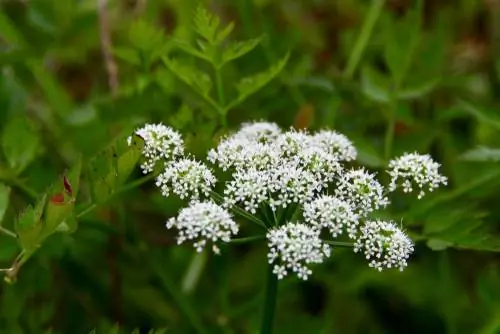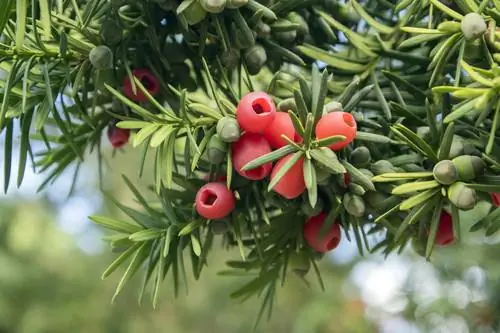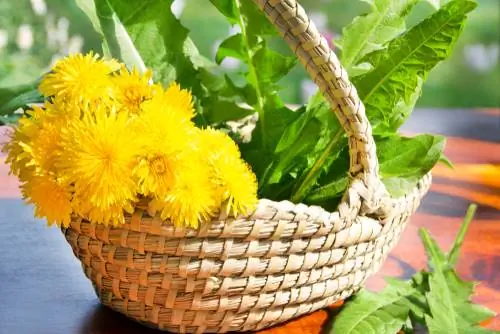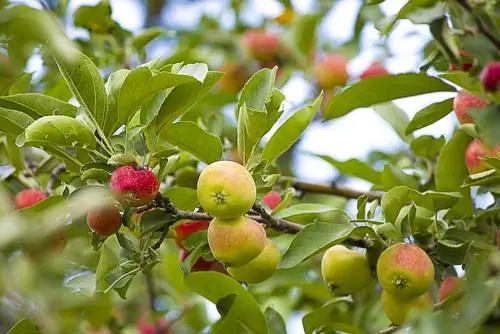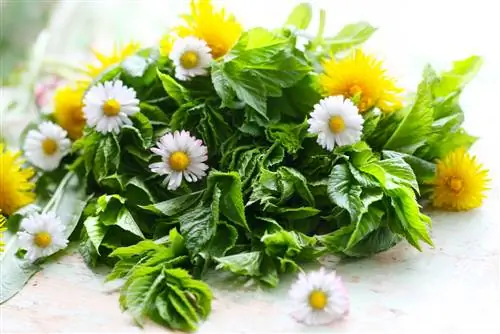- Author admin [email protected].
- Public 2023-12-16 16:46.
- Last modified 2025-01-23 11:21.
From a human perspective, wild herbs should be treated with caution. There are specimens that are incredibly he althy for us. And others who can kill us in an instant with their toxins. Which wild herbs do we need to be careful of?
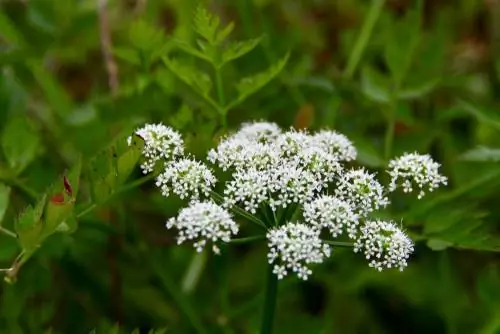
Which wild herbs are poisonous to humans?
Poisonous wild herbs such as groundsel, buttercups and lookalikes of edible plants can be dangerous for people. When collecting, it is important to be well informed, to clearly identify plants and to avoid confusion.
The range of poisons is large
Many plant species protect themselves from their predators with various toxins. Some of them are only slightly toxic to us humans. For example, they cause skin irritation, nausea or vomiting. Others, on the other hand, are so poisonous that even the smallest amounts can lead to death. It is assumed that around 20 percent of the wild herbs native to this country are poisonous to us humans.
- be sure to inform before collecting
- Only collect edible wild herbs if they can be clearly identified
- take relevant literature (€14.00 on Amazon) with illustrations
Old herbs
Oldweeds are all poisonous. Therefore, they represent one of the greatest dangers when collecting. They are also widespread in many species. It is the pyrolizzidine alkaloids they contain that damage the human liver. They can be found in pastures, meadows and fallow areas, where they provide splashes of yellow color when they are in bloom. Some species also sow themselves in bed areas.
Ranunculus
Every wild herb collector will come across buttercups. They are a large family of plants with over 600 species. They are widespread in this country because they can cope with almost any location. The best known is certainly the spicy buttercup, also known as buttercup. The ingredients protoanemoning and ranunculin are considered very toxic. Large amounts of them are fatal to the human organism.
Some examples of doppelgängers
Many edible wild plants have so-called doppelgängers. These are other wild plants that resemble you completely or only in certain parts of the plant. Below is a list of common mix-ups when collecting wild herbs:
- Wild garlic with lily of the valley, spotted arum and autumn crocus
- Comfrey with foxglove
- Cow parsley with spotted hemlock
- Parsley with Blue Monkshood
- Watercress with poisonous water hemlock
- March Violet with Common Hazelroot
- Rucola with Jacob's ragwort
- Common Mugwort with Blue Monkshood
- Field mint with polei mint
Tip
Grow a few selected wild herbs in your own garden or on the balcony. This way you reduce the risk of using a doppelganger.

